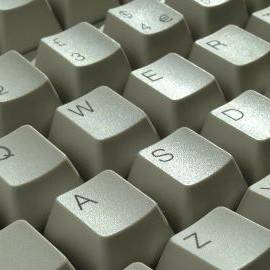 New York is still here. Changed though. Safe as houses these days, it would seem.
New York is still here. Changed though. Safe as houses these days, it would seem.
I am sitting in the Bank Street apartment watching football, Colts vs. Giants. Over the last few days, I repeatedly postponed a pilgrimage to the not-mosque site. Maybe tomorrow I’ll go to a scheduled press conference. But the non-mosque story has gone from being a priority back home to something which is clearly a very minor blip in the New York panorama. People here are probably thinking about it a lot less than people in Homer.
I forgot to bring my notebook. That’s a first. In the past, I’d jot notes for the stories I’d lined up before arriving. This time, I’m posting my pictures and comments and giving play by play updates to my Facebook wall. It’s published, read, and done already. So far, I’ve been to a couple of plays (on Broadway and off), took in some music at Washington Square, meandered Central Park, passed through Little Italy during the Feast of San Gennaro, had meals in Chinatown and at Mapamondo and the Frying Pan on the piers, gawked at the Spotted Pig, talked about Lou Reed cruising by on a bicycle, thinking about going to Laurie Anderson on Tuesday in Brooklyn… The usual nonstop array.
Will watch Mad Men tonight. Last night, watched an old Chabrol movie, The Butcher, a Netflix movie I brought with me on the plane.
So, maybe I’ll still do that story on the (yawn) not-mosque, but my heart’s not in it. What I’m really thinking about is typing. I’m typing now. I’ve been typing for fifty years. Typing is one of the few consistencies in my life. I remember crying in fourth grade when Mrs. Huff chided my penmanship, a trauma that led me toward keyboards immediately. I started typing poetry on thin paper ribbons of paper that I stole from my father’s office adding machine. I think I had been inspired by the tales of Jack Kerouac writing “On the Road” on a single roll of paper.
From there I graduated to regular paper cranked into the roller of a sturdy Royal manual typewriter. In high school, the most influential class I took was Mrs. Foster’s typing class, which was mostly for girls who intended to become secretaries in their then-limited career options. But for me, it was like suddenly having access to an oxygen tank.
By the time I was an adult, I had several typewriters, one a portable, almost foldable little machine that I carried to Cannes, to peck out stories while attending the festival. I hauled that machine through airports without a blink. I remember seeing Roger Ebert at one of the festivals, typing faster than I could dream of doing, writing reviews apparently off the top of his head in one of the press rooms, where typewriters were supplied for writers on deadline.
But I wanted my own machine with me. I wanted to have access to the keyboard I knew day and night.
In the early 1980s, I bought an IBM Selectric II from the official salesperson who came to my apartment and taught me the proper care and operation for my investment. The machine I bought was bright red. It cost $1000. I had several font balls, one pica and one elite and one for special characters, and I used them all for various purposes. The erasable ribbon feature was a great plus, allowing me to avoid endless retyping and sometimes enabling final drafts to be completed during initial composition. Before, there was a lot of paper wasted from draft to final copy (not to forget carbon paper), all neatly double-spaced, put into manila envelopes, and mailed (with return envelopes and postage) to publications.
The IBM paid for itself quickly. But on the horizon was word processing. I was the earliest adopter. I knew immediately that I would not just type, but process words, as soon as possible. I cobbled together an early basic word processing machine out of a bad monitor, keyboard, tons of cables, and one horrible dot matrix printer. It did the job and allowed me to edit the story before printing it out, but I still relied upon the IBM to type the finished story.
Although at this moment, with Colts 17 and Giants 0, my keyboard is a borrowed MacBook Pro (that feels unwieldy at best) and I can’t say I like it much. But I’ve been keying on my phone, on the iPod Touch, and other keypads. Above them all, I much prefer the curved wireless keyboard I have at home. My brain extends to my fingertips and the thoughts and the movement of the fingers across the keys are one.
I know the best and most famous writers, from Philip Roth to Stephen Sondheim, love yellow legal pads and use pencils. Richard Powers apparently dictates his books. I’d probably be a better writer if I hadn’t botched penmanship in fourth grade. But, I am what I am, as the song goes, and I think with my fingers. I always have.
For me, typing is like tai chi, the motion of thought across a keyboard, a spiritual exercise and a physical act in one. I’m not sure what I think about the way people today, all across New York, on subways and in the street, have co-opted the act of typing by texting, by keying their thoughts, by communication with their thumbs. But the keyboard persists, adapts, mutates, and survives. Keyboards are like holy cockroaches. They may outlive us all.
And I just have this to say, I keyed this in while watching football and Mad Men. It’s more than a little rough, but it is what it is and here it is, the first and final draft and no notebook, no paper, no ink anywhere at all.








